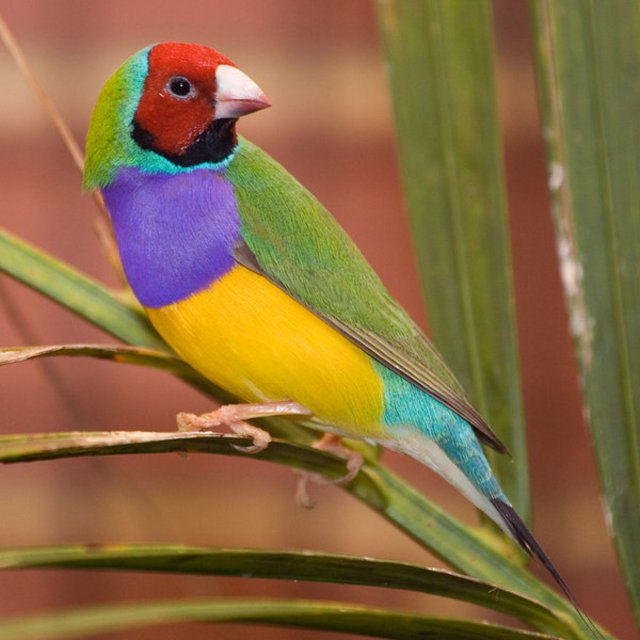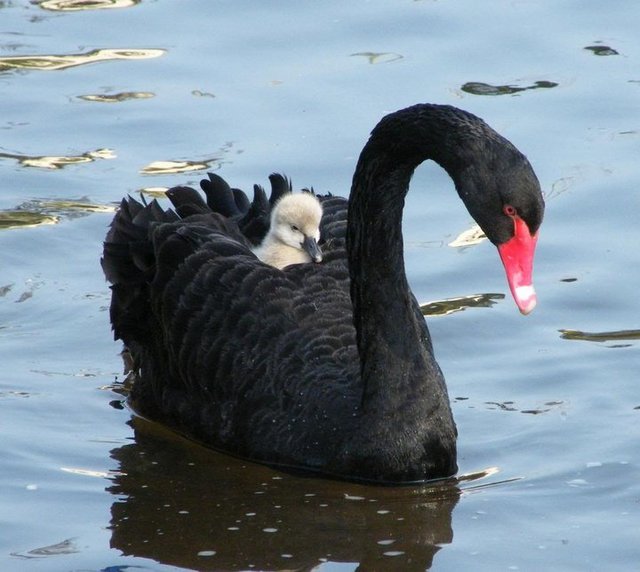Bretrick
Well-known Member
- Location
- Perth Western Australia
Major Mitchell Cockatoo
Named for Major Sir Thomas Mitchell, an explorer and surveyor of Australia and admirer of the species.
The Major Mitchell's cockatoo is native to inland Australia.
Relatively small, with pink underparts and white upperparts. Magnificent, long white crest has colourful band of red at base.
Found across the arid and semi-arid inland, from south-western Queensland south to north-west Victoria, through most of South Australia, north into the south-west Northern Territory and across to the west coast between Shark Bay and about Jurien. In NSW it is found regularly as far east as about Bourke and Griffith.
Inhabits a wide range of treed and treeless inland habitats, always within easy reach of water.
Feeds mostly on the ground, especially on the seeds of native and exotic melons and on the seeds of species of saltbush, wattles and cypress pines.
Normally found in pairs or small groups, though flocks of hundreds may be found where food is abundant.
Nesting, in tree hollows, occurs throughout the second half of the year; nests are at least 1 km apart, with no more than one pair every 30 square kilometres.

Regent Bower Bird
Regent bowerbirds are found in rainforests on the east coast of Australia, east of the Great Dividing Range, in southeast Queensland and northeast New South Wales. Their total range covers an area of about 20,000 to 50,000 sq kilometres.
Bowerbirds are songbirds.
Males are mostly shiny black with glossy gold patches on their crowns, the backs of their necks, and the distal ends of their wings. They have yellow bills and eyes. Females are mottled brown with a scalloped pattern of dark and light brown.
Bowerbirds have high average lifespans living up to 20 to 30 years.
Male Regent Bowerbird

Female Regent Bowerbird

Royal Spoonbill
The Royal Spoonbill is a large white waterbird with black, spoon-shaped bill, facial skin, legs and feet. During the breeding season, it has a distinctive crest, which can be up to 20 cm long, 8".
The Royal Spoonbill is found in shallow freshwater and saltwater wetlands, intertidal mud flats and wet grasslands. Both permanent and temporary inland waters are used when available in the arid zone.
The Royal Spoonbill is found throughout eastern and northern mainland Australia from the Kimberley region of Western Australia across the Top End and through Queensland, New South Wales and Victoria, to south-eastern South Australia. It is only a rare visitor to Tasmania.
The Royal Spoonbill feeds mainly on fish in freshwater, and on shrimps in tidal flats.
They use grunts, growls and soft honks to communicate. They also make non-vocal sounds such as bill-snapping and 'wing-woofing' during aggressive displays.

Gouldian Finch
Gouldian Finches are Australia's most spectacularly coloured grass finches, and are perhaps the most spectacularly coloured of all Australian birds.
Gouldian finches are native to Australia and now occur only in the Northern Territory and in the Kimberley in Western Australia. These birds live in the tropical savannah, thickets, and woodlands with grassy plains usually near water.
Gouldian finches are social birds and they often join mixed flocks that may consist of up to 1,000-2,000 individuals.
Gouldian finches are herbivores; they feed on ripe and half-ripe grass seeds and occasionally some insects.

Australian Bustard
Also called Bush Turkey.
One of Australia’s largest birds, the Australian Bustard is up to one metre tall with a wingspan of up to 2.3 metres. 6' +. Heavy bodied, ground-dwelling birds, up to 10 kilograms - 22lb.
Australian Bustards can be found in each state of Australia. Preferred habitats are on open grassed plains, low shrubbed areas and in woodland.
It is Australia’s heaviest flying bird. When disturbed these birds nonchalantly walk away slowly with their heads in the air.
They are omnivorous, foraging on insects, young birds, lizards, mice, leaves, seeds and fruit.

Crimson Rosella
Native to east and south east Australia (Southern Queensland to Victoria). Its preferred habitat includes mountain forests and gardens.
They mostly feed on grass and tree seeds, as well as a variety of fruits, berries, flowers and nectar.
Rosellas are often noisy, except when feeding, which is typically done in silence. When roosting in groups, soft chattering or high pitched rapid ‘pi-pi-pi-pi-pi’ contact calls can be heard. Their alarm calls are shrill and screechy. In flight, they make ‘kwik, kwik’ vocalizations.
Rosellas can live to 15 or more years. Females reach reproductive maturity when they are about 18 months old, while males are able to successfully breed when they are 2 – 3 years old.

Spotted Pardalote
This is one of the smallest of all Australian birds at 8 to 10 centimetres - 3.1 to 3.9" in length, and one of the most colourful.
Very common in woodlands and eucalypt forest within its range, which covers most of Australia. Makes small nest burrows in soil banks.

Black Swan
The black swan is an Australian icon. The official emblem of Western Australia, depicted in the state flag and coat-of-arms, it decorates several public buildings. The bird is also the namesake for Perth’s Swan River.
The birds are entirely black except for the white outer flight feathers of the wings, with an orange to dark red beak. The cygnets are covered with light grey down. Males grow about 1.3 metres long and females grow to 1.2 metres. Black Swans have a trumpet-like call.
Black Swans predominantly occur in the southeast and southwest of Australia, live throughout southern Australia, extending south to Tasmania and north to Townsville in Queensland and Port Headland in Western Australia.
Older birds generally bond permanently with one partner, younger birds may pair up for only a short time, breed then desert the nest, leaving the other partner of either sex to care for the young.


Named for Major Sir Thomas Mitchell, an explorer and surveyor of Australia and admirer of the species.
The Major Mitchell's cockatoo is native to inland Australia.
Relatively small, with pink underparts and white upperparts. Magnificent, long white crest has colourful band of red at base.
Found across the arid and semi-arid inland, from south-western Queensland south to north-west Victoria, through most of South Australia, north into the south-west Northern Territory and across to the west coast between Shark Bay and about Jurien. In NSW it is found regularly as far east as about Bourke and Griffith.
Inhabits a wide range of treed and treeless inland habitats, always within easy reach of water.
Feeds mostly on the ground, especially on the seeds of native and exotic melons and on the seeds of species of saltbush, wattles and cypress pines.
Normally found in pairs or small groups, though flocks of hundreds may be found where food is abundant.
Nesting, in tree hollows, occurs throughout the second half of the year; nests are at least 1 km apart, with no more than one pair every 30 square kilometres.

Regent Bower Bird
Regent bowerbirds are found in rainforests on the east coast of Australia, east of the Great Dividing Range, in southeast Queensland and northeast New South Wales. Their total range covers an area of about 20,000 to 50,000 sq kilometres.
Bowerbirds are songbirds.
Males are mostly shiny black with glossy gold patches on their crowns, the backs of their necks, and the distal ends of their wings. They have yellow bills and eyes. Females are mottled brown with a scalloped pattern of dark and light brown.
Bowerbirds have high average lifespans living up to 20 to 30 years.
Male Regent Bowerbird

Female Regent Bowerbird

Royal Spoonbill
The Royal Spoonbill is a large white waterbird with black, spoon-shaped bill, facial skin, legs and feet. During the breeding season, it has a distinctive crest, which can be up to 20 cm long, 8".
The Royal Spoonbill is found in shallow freshwater and saltwater wetlands, intertidal mud flats and wet grasslands. Both permanent and temporary inland waters are used when available in the arid zone.
The Royal Spoonbill is found throughout eastern and northern mainland Australia from the Kimberley region of Western Australia across the Top End and through Queensland, New South Wales and Victoria, to south-eastern South Australia. It is only a rare visitor to Tasmania.
The Royal Spoonbill feeds mainly on fish in freshwater, and on shrimps in tidal flats.
They use grunts, growls and soft honks to communicate. They also make non-vocal sounds such as bill-snapping and 'wing-woofing' during aggressive displays.

Gouldian Finch
Gouldian Finches are Australia's most spectacularly coloured grass finches, and are perhaps the most spectacularly coloured of all Australian birds.
Gouldian finches are native to Australia and now occur only in the Northern Territory and in the Kimberley in Western Australia. These birds live in the tropical savannah, thickets, and woodlands with grassy plains usually near water.
Gouldian finches are social birds and they often join mixed flocks that may consist of up to 1,000-2,000 individuals.
Gouldian finches are herbivores; they feed on ripe and half-ripe grass seeds and occasionally some insects.

Australian Bustard
Also called Bush Turkey.
One of Australia’s largest birds, the Australian Bustard is up to one metre tall with a wingspan of up to 2.3 metres. 6' +. Heavy bodied, ground-dwelling birds, up to 10 kilograms - 22lb.
Australian Bustards can be found in each state of Australia. Preferred habitats are on open grassed plains, low shrubbed areas and in woodland.
It is Australia’s heaviest flying bird. When disturbed these birds nonchalantly walk away slowly with their heads in the air.
They are omnivorous, foraging on insects, young birds, lizards, mice, leaves, seeds and fruit.

Crimson Rosella
Native to east and south east Australia (Southern Queensland to Victoria). Its preferred habitat includes mountain forests and gardens.
They mostly feed on grass and tree seeds, as well as a variety of fruits, berries, flowers and nectar.
Rosellas are often noisy, except when feeding, which is typically done in silence. When roosting in groups, soft chattering or high pitched rapid ‘pi-pi-pi-pi-pi’ contact calls can be heard. Their alarm calls are shrill and screechy. In flight, they make ‘kwik, kwik’ vocalizations.
Rosellas can live to 15 or more years. Females reach reproductive maturity when they are about 18 months old, while males are able to successfully breed when they are 2 – 3 years old.

Spotted Pardalote
This is one of the smallest of all Australian birds at 8 to 10 centimetres - 3.1 to 3.9" in length, and one of the most colourful.
Very common in woodlands and eucalypt forest within its range, which covers most of Australia. Makes small nest burrows in soil banks.

Black Swan
The black swan is an Australian icon. The official emblem of Western Australia, depicted in the state flag and coat-of-arms, it decorates several public buildings. The bird is also the namesake for Perth’s Swan River.
The birds are entirely black except for the white outer flight feathers of the wings, with an orange to dark red beak. The cygnets are covered with light grey down. Males grow about 1.3 metres long and females grow to 1.2 metres. Black Swans have a trumpet-like call.
Black Swans predominantly occur in the southeast and southwest of Australia, live throughout southern Australia, extending south to Tasmania and north to Townsville in Queensland and Port Headland in Western Australia.
Older birds generally bond permanently with one partner, younger birds may pair up for only a short time, breed then desert the nest, leaving the other partner of either sex to care for the young.


Last edited:

